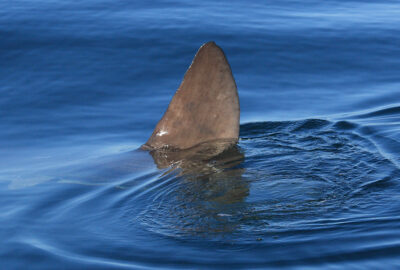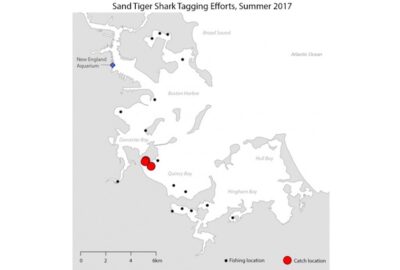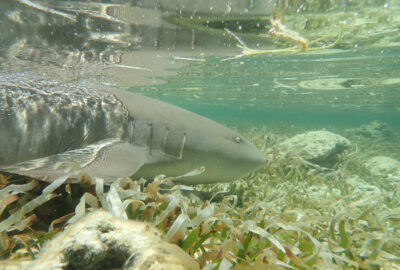Need to Confirm a White Shark Sighting? Ask John Chisholm
As an adjunct scientist in the Aquarium’s Anderson Cabot Center for Ocean Life, John brings over four decades of shark expertise to the table.
By New England Aquarium on Friday, August 08, 2025


When it comes to confirming a white shark sighting, it’s important to avoid leading questions, says John Chisholm, an adjunct scientist in the Aquarium’s Anderson Cabot Center for Ocean Life.
“The hardest part is making them realize when they’ve actually just seen a basking shark or a sunfish,” he said.
John has been studying white sharks in the Atlantic since the 1970s and has identified more than 500 individual white sharks up and down the East Coast. As white shark activity begins to peak in late summer here in New England, John is the go-to for verifying sightings from both fellow scientists and the public.
Where are white sharks in New England?
White sharks are now reliable visitors along Cape Cod, thanks in part to the rebounding grey seal population, and they can range as far north as Maine and Canada in the summer months. While some confirmed sightings seem surprising, including a recent encounter with paddleboarders off Woods Hole, the truth is that these sharks “could be anywhere at any time” in New England waters, John said.
Concentrated sightings—like what you might see off Chatham any given day in July through September —often reflect where research is happening, or where people are out on the beach. That’s why John emphasized the importance of being “shark smart” any time you get in the water. Avoid swimming at dusk or dawn, when sharks are most active, and stay away from large schools of fish or seals in the water.
Still, while white sharks are more prevalent in our area, they also share the ocean with other marine animals who are large, grey, have fins, and splash. The most common mix-ups are basking sharks—which, while large and imposing, are harmless filter-feeders—and ocean sunfish or mola-molas.
“Even grey seals, when just their heads are out of the water, get mistaken for a shark,” John said.
Along with scrutinizing a photo from a sighting, John will ask specific questions about what the person saw—such as how the fin moved—to help clarify whether it was really a white shark. He estimated that most reported sightings are either a different type of shark or one of the frequent white shark impostors.
“Sometimes I’m trying to say, well, you saw a basking shark! That’s the second-largest fish, how many of your friends have seen that?” he said, laughing. “But it’s no consolation. Everyone wants to see a white shark.”
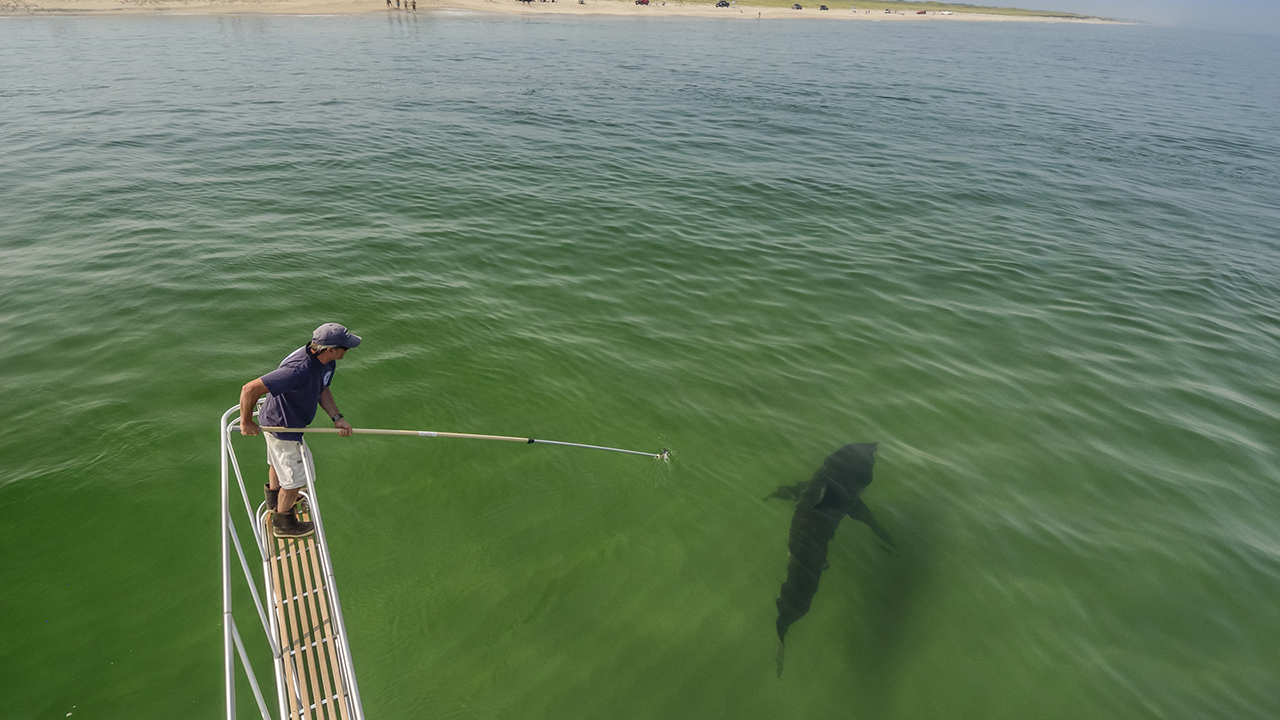
Smartphones have changed shark sighting
Aside from the number of white sharks around New England, another major change over the years is how many people always have a camera on them. In the past, John primarily heard reports from fishers and worked to piece together evidence of white shark sightings. “Usually, it was getting to me second-or third-hand and I had to track down the original source,” John said. “I hardly ever had a photo.”
Now, as more people are documenting their sightings, citizen science is “filling in the gaps” outside of where researchers are working, John said. Plus, as white sharks’ popularity increases, more people are on the lookout. That means more confirmed reports from the public than ever—but also more sightings to sift through.
Trust Sharktivity for verified reports
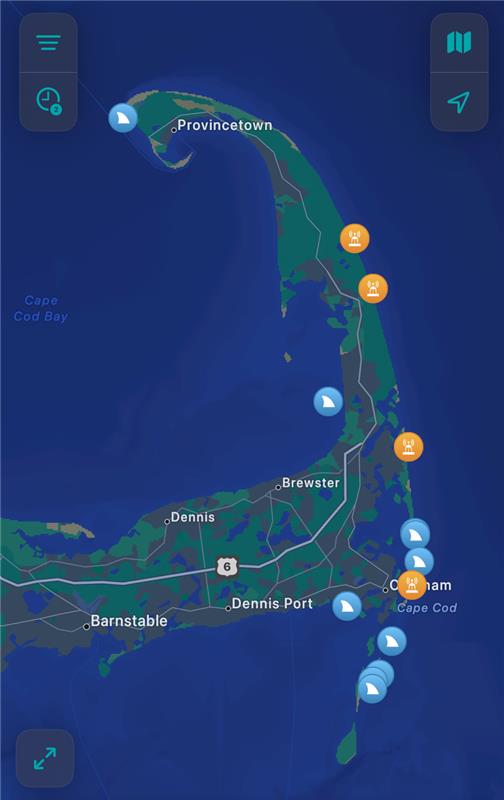
With the advent of viral social media content and now, AI-generated images, a “good chunk” of the reports John gets are false. He pointed to a popular video of an alleged white shark sighting on White Horse Beach, which he was contacted about to confirm. “I recognized the video immediately and realized, ‘This is an old video, someone’s pulling a prank,’” John said.
That’s why it’s important to rely on trusted sources like the Atlantic White Shark Conservancy and the Sharktivity app. On Sharktivity, before sightings are visible on the app, they’re reviewed by John. As part of a partnership between the New England Aquarium and the Atlantic White Shark Conservancy, he verifies white shark reports made by the public and identifies legitimate sightings.
“Every sighting submitted by the public comes to me for review,” he said. The best submissions have a clear photo of the shark or are of a bitten seal on the beach—John can easily ID a white shark from those details. For other, trickier reports, he relies on his usual method to confirm if it was a white shark: asking questions about what the person saw. “I try to get them to describe the fish well enough that I can make a judgment call, which I usually can,” John said.
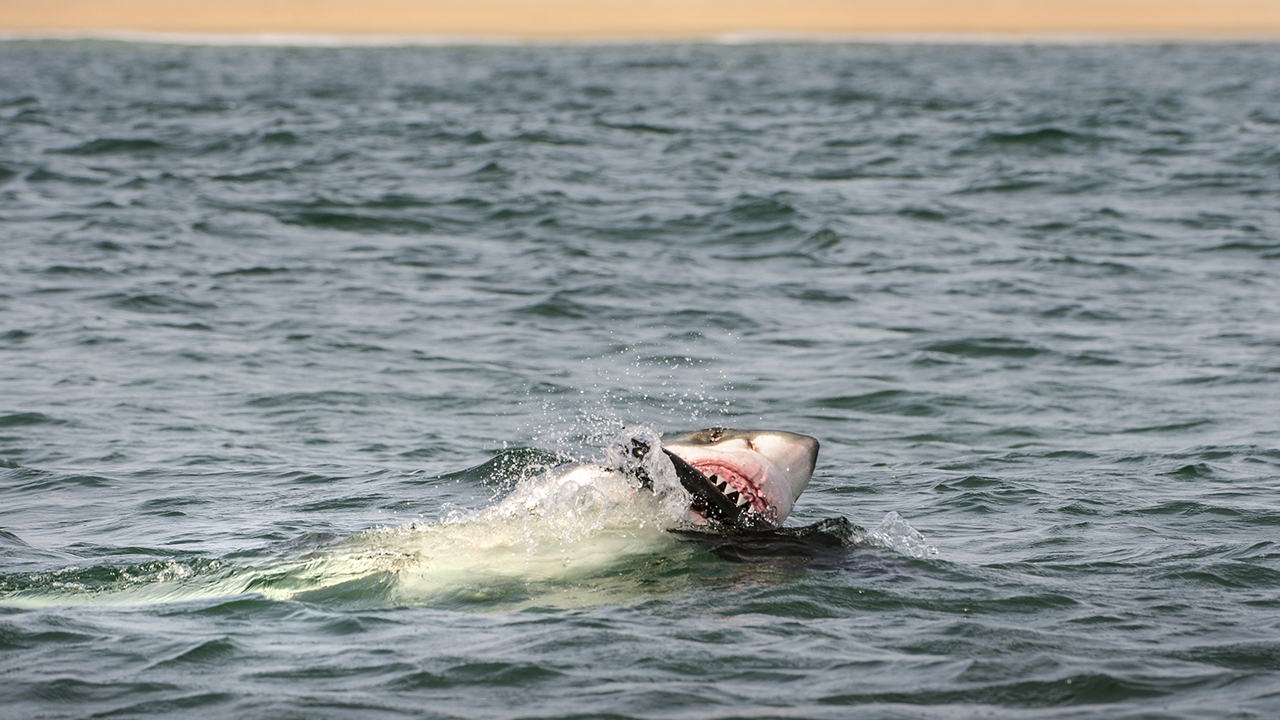
What to do if you think you saw a white shark
While summer seems like prime time for sharks in New England, white sharks’ peak presence in local waters isn’t until late August through October. So, it’s important to stay “shark smart” during the fall, too. Be aware of sharks’ presence in shallow waters, avoid areas where seals are present or schools of fish are visible, and stay close to shore where emergency responders can reach you if needed.
If you think you spot a shark at the beach, notify a lifeguard if there’s one on duty. Also, report the sighting on Sharktivity—you’re sure to be contacted by John about it. While the app isn’t a real-time representation of where white sharks are, John said it’s still a useful reminder that the ocean is a shared space. A core focus of the Aquarium and Anderson Cabot Center’s work is to help humans use and enjoy the ocean responsibly, and minimizing conflict with wildlife is part of that.
This partnership with the Conservancy has enabled the Aquarium and Anderson Cabot Center to lend their expertise to efforts that increase public awareness and safety around sharks. “I tell people, if you’re gonna go to the beach, you check the weather to see what the weather’s gonna be that day, you check the traffic to see if there’s any traffic on the way, and you should also check Sharktivity to see if there’s been sharks around in the area,” John said.
“They’re here,” he added. “And we’re going to have to change our behavior a little because they’re not going to change theirs.”

